From his first appearance on Game of Thrones (chastising Jaime while skinning a stag) Tywin Lannister was preoccupied with legacy, bringing up the topic every so often – usually whenever any of his children displeased him. Tywin’s mission statement for his children was to ensure that when he and his children and his children’s children were all dead, the Lannister name would live on. And live on as a family name to be feared.
Cersei regarded herself as a female Tywin and she bought in on the paternal lesson that strength and fear went hand in hand, but she probably won’t end up doing the Lannister name much good. History is written by the victors and, since it’s unlikely that Cersei will win this game of thrones she’s playing, history will probably not be kind to her. But even if Cersei manages to pull off a dramatic upset, something she’s managed in the past, history might still not be all that kind. Based on Cersei’s actions and circumstances (and some ingrained misogyny), it’s highly likely that she’ll be long remembered as a witch.
Before we go to much further, although my features try to largely focus mostly on the show, I do bring in the occasional book nugget. This feature will be pulling in minor details from the recently published Fire and Blood. For people who want to read GRRM’s newly expanded history on House Targaryen, from Aegon I through the regency of Aegon III, and want to be totally unspoiled, this is your warning. I’ll be talking about some minor characters. Also, there will be references to just a touch of details from A Knight of the Seven Kingdoms (the Dunk and Egg novellas.)
The world of Planetos includes practitioners of inexplicable powers, and there are characters who recognizably are witches.
- Mirri Maz Durr.
- Melisandre.
- Maggy the Frog.
- Probably Quaithe, whose name unfortunately doesn’t start with an M for alliterative satisfaction. (Wait – Madame Quaithe. Nailed it.)
Cersei Lannister isn’t turning people into newts, or flying on broomsticks, or doing the more fantastical things that stereotypical witches from folklore do. But she checks off enough of the ancillary boxes of witchiness to make a case to superstitious smallfolk.
TIL DEATH DO US PART
Cersei is a widow – which in itself is not incriminating. There are many widows in Westeros, in particular thanks to the War of the Five Kings.
Margaery: I was worried that being widowed twice would cut down on my prospects. Nope.
But being widowed under suspicious circumstances can lead to wild speculation. The Red Widow of Coldmoat, Rohanne Webber, had a succession of husbands. They died off so quickly, the smallfolk assumed she was poisoning them. And since all of Rohanne’s pregnancies resulted in miscarriages or stillbirths, it was believed that she had bargained off her unborn children to demons in exchange for dark magical knowledge.
Rhaena Targaryen can’t be blamed for her husband Aegon’s death, dying in dragonflight combat against his uncle Maegor the Cruel. But Rhaena’s third husband (Her uncle Maegor ended up being her second hubby) took his life by leaping out of a tower on Dragonstone. (He had his reasons.) The triple-widowed Rhaena spent her last years living in seclusion in Harrenhal and was feared by the folk of the Riverlands as a witch.
Cersei’s husband Robert Baratheon died while hunting boars, a sporting activity at which he was well accomplished. Hunting savage beasts can be a dangerous hobby and hunting accidents do happen, but Cersei soon found herself associated with the tragic event in song:
Joff commanded them to fetch his woodharp and ordered him to perform the song for the court. The singer wept and swore he would never sing that song again, but the king insisted. It was sort of a funny song, all about Robert fighting with a pig. The pig was the boar who’d killed him, Sansa knew, but in some verses it almost sounded as if he were singing about the queen.
–A Game of Thrones, Sansa VI
Cersei became more believably complicit in Robert’s death when she was accused of regicide by the High Sparrow, based on testimony from the devout Lancel Lannister, Cersei’s former lover and King Robert’s former squire and boar-hunting attendant.
The accusation was never put to the test, since Cersei blew up the Sept of Baelor with wildfire before she could be put on trial. But the accusation could never be debunked precisely because of this interruption of due process. Also, the wildfire destruction of the Sept is pretty suspicious, much as she might want to cover it up as a “tragic accident.”
Remembering the Red Widow of Coldmoat, Cersei might be memorialized as the Golden Widow of King’s Landing.
WON’T SOMEBODY THINK OF THE CHILDREN
In folklore tales of witches, children often are at risk. Whether being fattened up for a central role in dinner, or at risk of being murdered by a huntsman or some other grisly fate, children aren’t safe around witches. This has been demonstrated as well on Game of Thrones.
Daenerys Targaryen lost her son Rhaego as a ritual ingredient for Mirri Maz Duur’s magic. Shireen Baratheon … let’s just not talk about that.
Lady Rohanne Webber was already cited as an example of possible baby-bargaining for power, but a more relevant example is Maegor the Cruel’s third wife, Tyanna of the Tower, a reputed sorceress from Lys. Tyanna confessed to poisoning the wombs of all of Maegor’s other wives, so his unborn children would be deformed and monstrous.
It is debatable if Cersei ordered the city watch to murder all of King Robert’s bastard children (including the baby Barra) or if it was Joffrey who ordered the Herod-like culling of throne-threatening children. But it doesn’t matter who ordered the deaths – what matters is who the people believe ordered the deaths. Tyrion originally assumed Cersei was the culprit, but he came to a different conclusion when she coyly did not admit to the crime, leading him to suspect Joffrey. I don’t think Cersei also put out a city-wide press release to convince the public of her innocence.
Except for the one non-book-canonical child with Robert who died young (another suspicious datapoint for people looking to cast Cersei in the role of a witch) Cersei had no children with Robert. Any other pregnancies of Baratheon origin she aborted.
Fate was not kind to Cersei’s children. Two of them died by poison and the young King Tommen leapt from a window to his death, just like Rhaena Targaryen’s husband. (Tommen, likewise, had his reasons.)
Maybe the death of Cersei’s beloved children is some kind of karmic payback, but to people examining Cersei’s rise to power, they might interpret it as something more insidious and deliberate.
THE WITCHY LADDER OF POWER
Westeros society in general is not particularly respectful or open to women in power. From the great council that chose Viserys I over the superior claim of Rhaenys to the Green faction that chose Aegon II over King Viserys’s designated heir Rhaenerys, to the Ironborn who chose Euron Greyjoy over their dead king’s daughter – the realm bends over backwards to hand power to males with lesser claims rather than bow to a queen.
Women who do achieve a measure of power often attract suspicion and the stain of dark rumors as well.
He was still trying to decide on a name. Robb was calling his Grey Wind, because he ran so fast. Sansa had named hers Lady, and Arya named hers after some old witch queen in the songs, and little Rickon called his Shaggydog, which Bran thought was a pretty stupid name for a direwolf.
— A Game of Thrones, Bran IINymeria nipped eagerly at her hand as Arya untied her. She had yellow eyes. When they caught the sunlight, they gleamed like two golden coins. Arya had named her after the warrior queen of the Rhoyne, who had led her people across the narrow sea.
— A Game of Thrones, Arya I
A powerful woman’s reputation seems to be carried down the ages differently along gender lines. Nymeria Martell, who brought her people from Essos to Dorne is known to Arya Stark as a warrior queen, but the songs that her brother Bran knew labeled Nymeria less flatteringly as a witch.
It’s not true that men in power in Westeros are immune to bad reputations. Maegor the Cruel was aptly named, and Brynden “Bloodraven” Rivers was rumored to be a dark and sinister sorcerer. But even in those cases there are women in the men’s stories who are often scapegoated to redirect some of the ill-associations.
Maegor’s mother Visenya is suspected of killing her nephew Aenys so Maegor could take the throne, and Maegor’s third wife Tyanna ran Maegor’s spy network as the Mistress of Whispers – when she wasn’t busy poisoning Maegor’s unborn babies.
Bloodraven might have been an actual wizard, but it is hinted that his lover Shiera Seastar was the source agent for any supernatural abilities he possessed.
Cersei seized power after the death of her husband and two sons. Her daughter died before her claim could even be considered, leaving Cersei to sit the Iron Throne almost by default.
It just seems suspiciously convenient that anyone with an actual claim to the throne died under unnatural circumstances – as well as the religious authority that was actively putting limits on Cersei’s power.
Tycho Nestoris: My condolences, Your Grace, on the death of your son. From all reports he was a fine young man.
Cersei: The Iron Bank didn’t send you here to offer condolences.
Tycho: Condolences, and congratulations. You’ve become the first ruling queen in the Seven Kingdoms. That’s quite an accomplishment. The Iron Bank appreciates how you cast off the yoke of superstition, freeing the crown from elements that sought to subvert the rule of law.
Cersei: The destruction of the Sept of Baelor was a tragic accident.
Tycho: Indeed.
Young king Tommen was deep in faith with the very superstition that Cersei cast off; he supported the High Septon over his own mother. And then he died.
No matter how Cersei tries to lamely frame the explosion of the Great Sept as an accident, the smallfolk tell a different story, explicitly saying that Cersei caused the Sept’s destruction.
Hotpie: Where you headed?
Arya: King’s Landing.
Hotpie: Why?
Arya: They say Cersei’s queen now.
Hotpie: I heard she blew up the Great Sept. That must have been something to see. Boom! I can’t believe someone would do that.
Arya: Cersei would do that.
Knowing that the High Septon shamed Cersei, ordered her for trial, and that the Sept was destroyed with Cersei reaping the benefit of a vacant Iron Throne, the circumstances provide a preponderance of evidence for skullduggery. Even though Cersei is innocent of her children’s deaths (mostly) that innocence gets overtaken by a presumption of guilt.
THE ENCHANTRESS
Witches in tales aren’t always old hags. Often they’re beautiful. Sometimes the cost of that beauty is terrifying.
The more Quentyn heard of Daenerys Targaryen, the more he feared that meeting. The Yunkai’i claimed that she fed her dragons on human flesh and bathed in the blood of virgins to keep her skin smooth and supple.
— A Dance With Dragons, The Windblown
Sometimes they’re both old hags and incredibly attractive.
Melisandre: Rude.
The point is, sometimes beauty is suspect.
Beautiful witches bewitch to get what they want. They seduce. Cersei is famously beautiful and is all about seduction. Her cousin Lancel is proof of that, and he was going to testify to how Cersei’s charms led him astray to the point where he assisted her in murdering the king.
Or he would have testified, had he not been blown up.
Westeros is replete with examples of beautiful witchy women charming men to the detriment of the realm. Shiera Seastar inflamed the jealousy-fueled feud between Brynden and Aegor Rivers, which contributed to the Blackfyre Rebellion. Jenny of Oldstones – okay, we don’t yet know what happened at Summerhall, but it was tragic and lovely Jenny was found enchanting by Prince Duncan and that all ended in, you know, tragedy.
Sometimes seduction is the last thing that’s happening. Sometimes terrible things are on the agenda.
POISON AND TORTURE
One does not have to be a witch to use poison or to torture people. But it’s never a shock when a witch is employing those techniques.
Tyanna of the Tower poisoned unborn babies, and tortured Maegor’s second wife for a fortnight until she died. As the Cruel Administration’s Mistress of Whispers, she probably extracted a few secrets via the extraction of teeth.
The people of the realm might not know that Cersei was planning on poisoning Tommen at the end of the Battle of the Blackwater, and Cersei is actually innocent of poisoning Joffrey even though his death got her closer ultimately to the Throne. But word could get out of Tyene Sand’s death by poison in the cells under the Red Keep, as well as Tyene’s mother Ellaria being forced to watch her poisoned daughter decompose. That’s a poison plus torture nightmare.
The two members of Cersei’s unnatural support network – Ser Gregor Clegane and the unsavory Qyburn – represent a living (sort of) poison and torture combo. Qyburn – trained in the use of poisons, managed to save Gregor’s life. Sort of. In a terrible way. And Cersei’s torture of her one-time tormentor Septa Unella was carried out entirely by the ghoulish attentions of Ser Gregor.
Septa Unella was not going to be allowed to die quickly, so there would be plenty of time for a gossipy gaoler to remark on the queen ordering her unnatural and monstrous servitor to abuse a woman of the holy order.
THE ROLE OF WITCHES IN WESTEROS
There’s a reason that powerful women in Westeros might find themselves labeled witches by society. It’s been discussed at length across the fan community that the society of the Seven Kingdoms is overwhelmingly patriarchal. One of the systems that normalizes the patriarchal structure is the religion of the New Gods: the Faith of the Seven.
The three female aspects of the Faith (Maiden, Mother, Crone) offer limited roles for women to play that are blessed by the gods or supported by society.
The traditional malevolent witch figure is often a mirror image to one of the three female aspects of God (God as described by the Faith of the Seven.)
- Where the Maiden is pure and innocent, the Witch is seductive and lustful.
- Where the Mother is supportive and nurturing, the Witch is toxic and destructive.
- Where the Crone is wise and provides clear guidance, the Witch is deliberately misleading and confounding, even when telling the truth.
For an excellent essay on witches as aspects of the Seven and the societal and psychological underpinnings – check out this work by Shakespearean expert and A Song of Ice and Fire scholar (and Con of Thrones 2018 panelist) ShakespeareOfThrones:
In Triple Aspect: Witches of Macbeth and A Song of Ice and Fire
The linked essay above will provide a much more in-depth discussion of Westeros’s conception of witches as anti-divine aspects. Read it! This feature can wait…
Because of the bias against women with power in Westeros, women in authority suffer the penalty of having the legitimacy of their authority questioned or found suspect if they don’t conform to the gender roles set by the Faith. Especially if their behavior can be mapped to the malevolent witch archetype.
From the Westerosi perspective a queen is absolutely fine, provided she supports a king. This is mirrored by the Father in the Faith of the Seven being in charge with the Mother as his companion. The divine maternal support includes providing heirs – that job requirement is in the name Mother.
This might explain why Queen Alysanne is known as Good Queen Alysanne instead of Witch Queen Alysanne. The patriarchy can get behind a good queen who is paired with a good king, as Alysanne was with Jaehaerys.
But problematic women in power have their power marginalized in the eyes of society. They are labelled as witches.
Either it reduces support for the woman, or it provides comfort to the patriarchal elements who can’t contend with the female-held power.
Lord Dude: Well, we would have conquered the Dornish, but that Princess Meria employed witchcraft.
Lord Bro: Dornishly unfair, and totally excuses our failure.
Lord Dude: Did we fail? Since we were facing dark sorcery, we did pretty good.
Lord Bro: True that! We rock.
Because of this bias, even if Cersei’s faction somehow wins and she gets to write the history books, her circumstances of being a suspected murderous widow, an employer of poison and torture, an alleged adulteress and seductress, and frankly dangerous to children guarantees that she’ll be considered a witch and remembered as such.
THE TALES (AND TAILORING)
Similar things could be said about Daenerys, already dealing with rumors that she bathes in blood, Elizabeth Bathory-like, to preserve her beauty. Dany’s penchant for crucifying slave masters noblemen as well as the occasional dragon-related burning and eating (which has claimed children, lets not minimize that) nudges Daenerys towards the witch category as well.
Khal Brobro: Don’t forget, she’s a widow. She killed Drogo. (And burned a bunch of khals – and used sorcery to survive the flame.) And the Dosh Khaleen said her baby would be the Stallion Who Mounted the World. Did she sacrifice her baby for power? Inquiring minds want to know.
These allegations are serious, but there’s a difference between Daenerys and Cersei. Cersei is coded as a witch from a meta-contextual level. George RR Martin has wrapped her in witch-like aspects not only from her circumstances within the story, but from our world as well.
Cersei’s name evokes Circe, the witch who transforms the Greek hero Odysseus’s men into boars.
The prophecy that Maggy the Frog gives Cersei as a child feels like a reference to Snow White’s wicked royal stepmother, obsessed with being the fairest of them all.
Young Cersei: But I will be queen?
Maggy the Frog: Oh yes. You’ll be queen – for a time. Then comes another. Younger. More beautiful. To cast you down and take all you hold dear.
And, let’s face it. Cersei is now dressing like she’s a member of Team Wicked, with her black dresses and sharp-armored epaulets.
But the fact that she has an evil-looking wardrobe selection isn’t a slam dunk. It’s our collective reaction when she started dressing that way.
At the end of Season Four, when Sansa Stark dyed her hair black and altered one of her aunt Lysa’s black dresses to fit her, the effect was striking. It was a revolutionary transformation from Sansa to this perception of Dark Sansa. But the perception was not reality. Sansa had not embraced a kind of evil ethos as some viewers had speculated. Eventually, Sansa shook off this goth phase to dress more like a classical northern lady.
It was notable that before blowing up the Sept, Cersei set aside her previous colorful dresses to adopt a dark visual persona. But it wasn’t a shocking transformation like Sansa Stark prancing down the steps in the Eyrie, dressed all in black.
Cersei embracing her outer Dark Cersei was not revolutionary, it was evolutionary. Like some kind of evil Pokemon who had achieved her final, boss state. No one was surprised when this happened, because Cersei had been coded to be something like a Witch Queen the entire time. The time was right for her to pull her Extra Evil duds out of the closet.
With the show dressing Cersei in sinister trappings and GRRM giving Cersei witch-like associations from classics ranging from the Odyssey to Snow White– this puts the Lannister lioness into her own evil witch queen category within the story.
For this reason, it’s unlikely that Daenerys will devolve into full-blown Mad Queen territory. That’s Cersei’s place of dishonor.
Tywin Lannister once said that the lion does not concern itself with the opinions of sheep. But his concern for leaving a legacy and his aspirations for how the family name is to be regarded (to be feared) does depend on the opinions of the populace. He might not be all that happy with how the proud Lannister name is used to invoke fear in the future.
Hotpie: Arry my little son, you haven’t finished your beets.
Arry: I don’t like beets, Papa.
Hotpie: Don’t like beets? Well, that’s fine. But you know what happens to little children who don’t clean their plates?
Arry: Wot?
Hotpie: The Lannister Witch, Queen Cersei, rises from her crypt and comes for them in the night. And eats them.
Arry: But if I don’t eat my beets, I’ll be so skinny that she won’t want to eat me.
Hotpie: Oh, she doesn’t mind skin and bone children. That makes her happiest of all. Besides, she’s just looking for something to put in her gravy. She never gives up on the gravy.
Arry: Where does the dead queen get gravy?
Hotpie: From the graveyard. Where else?
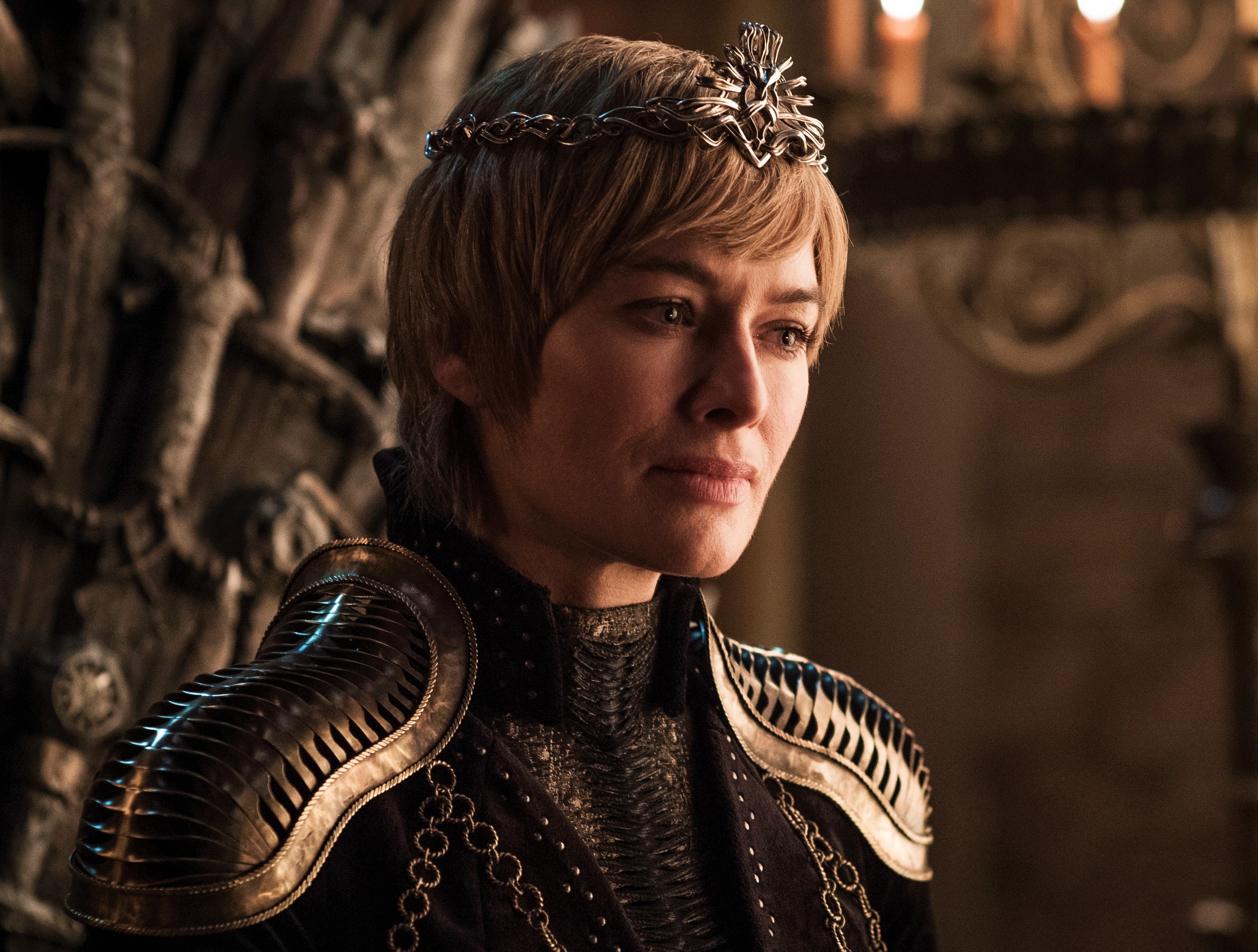
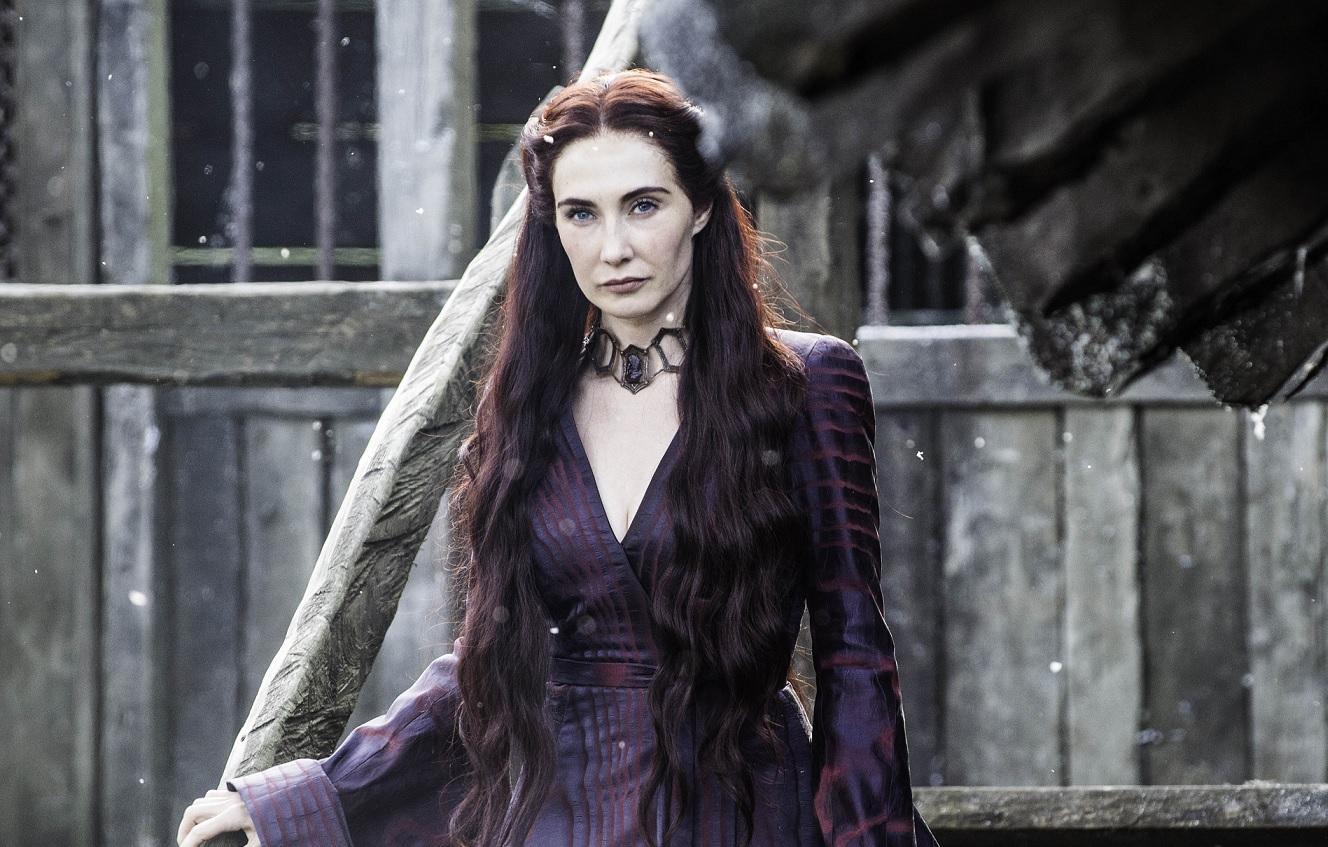
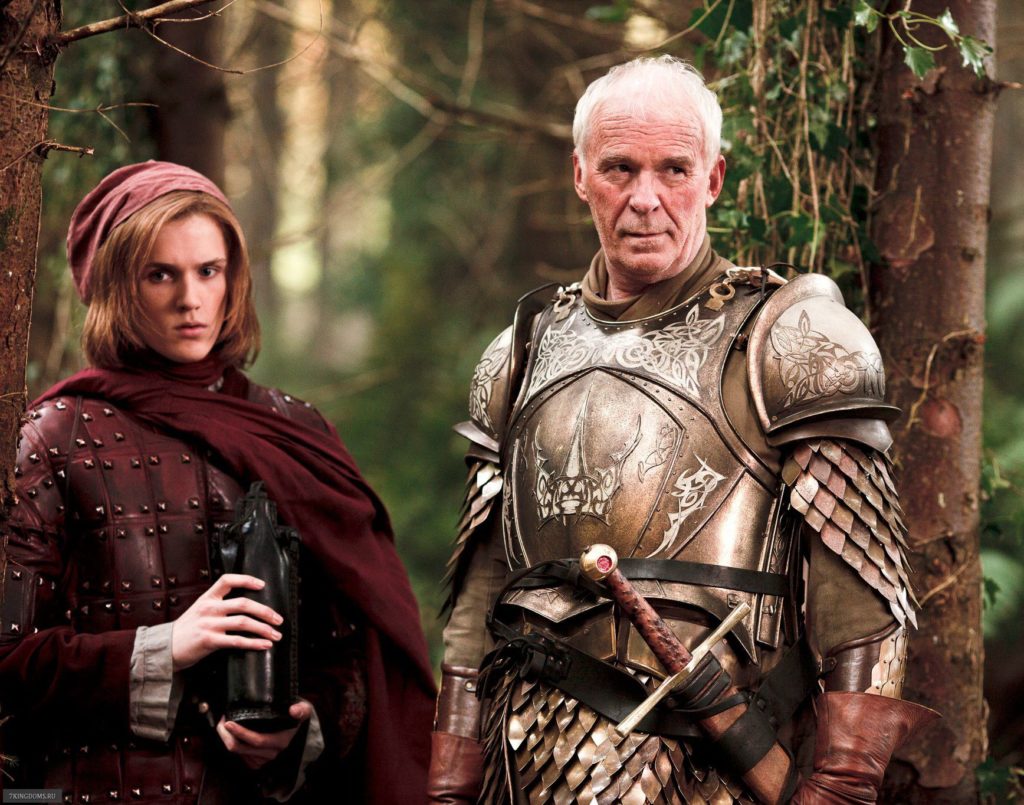
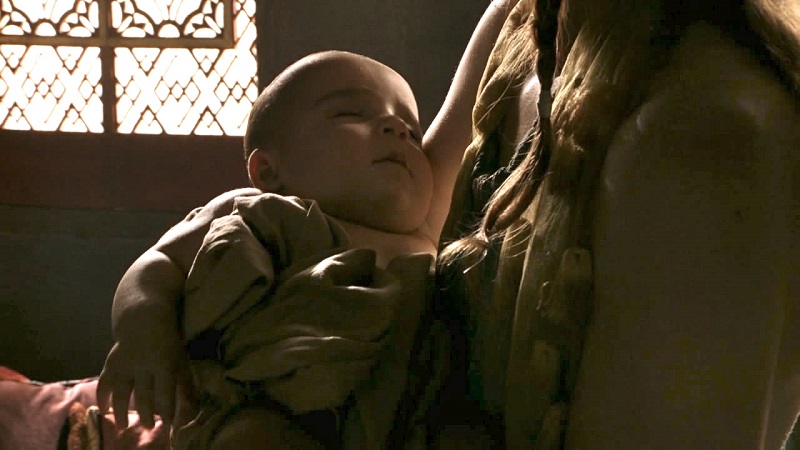
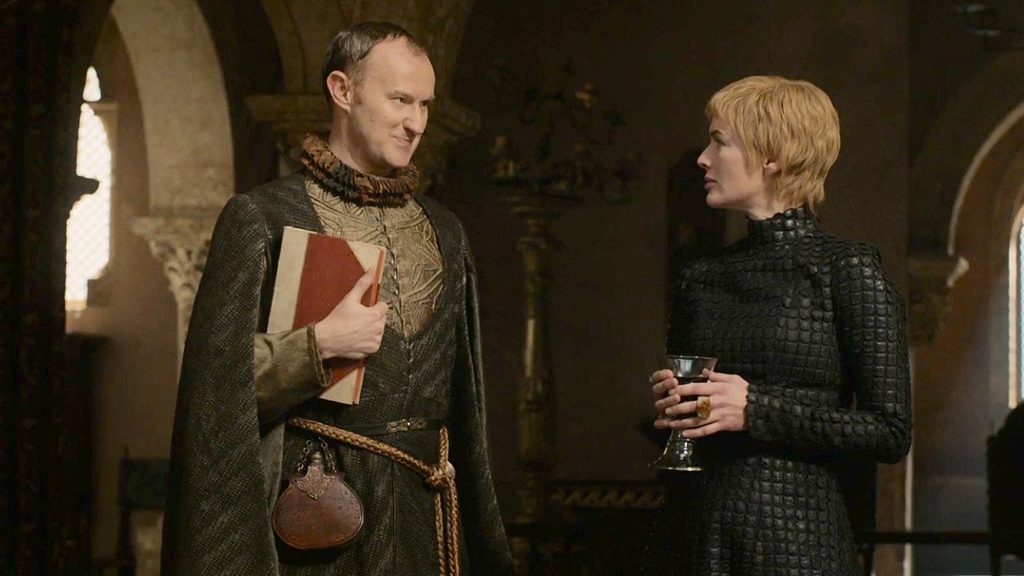
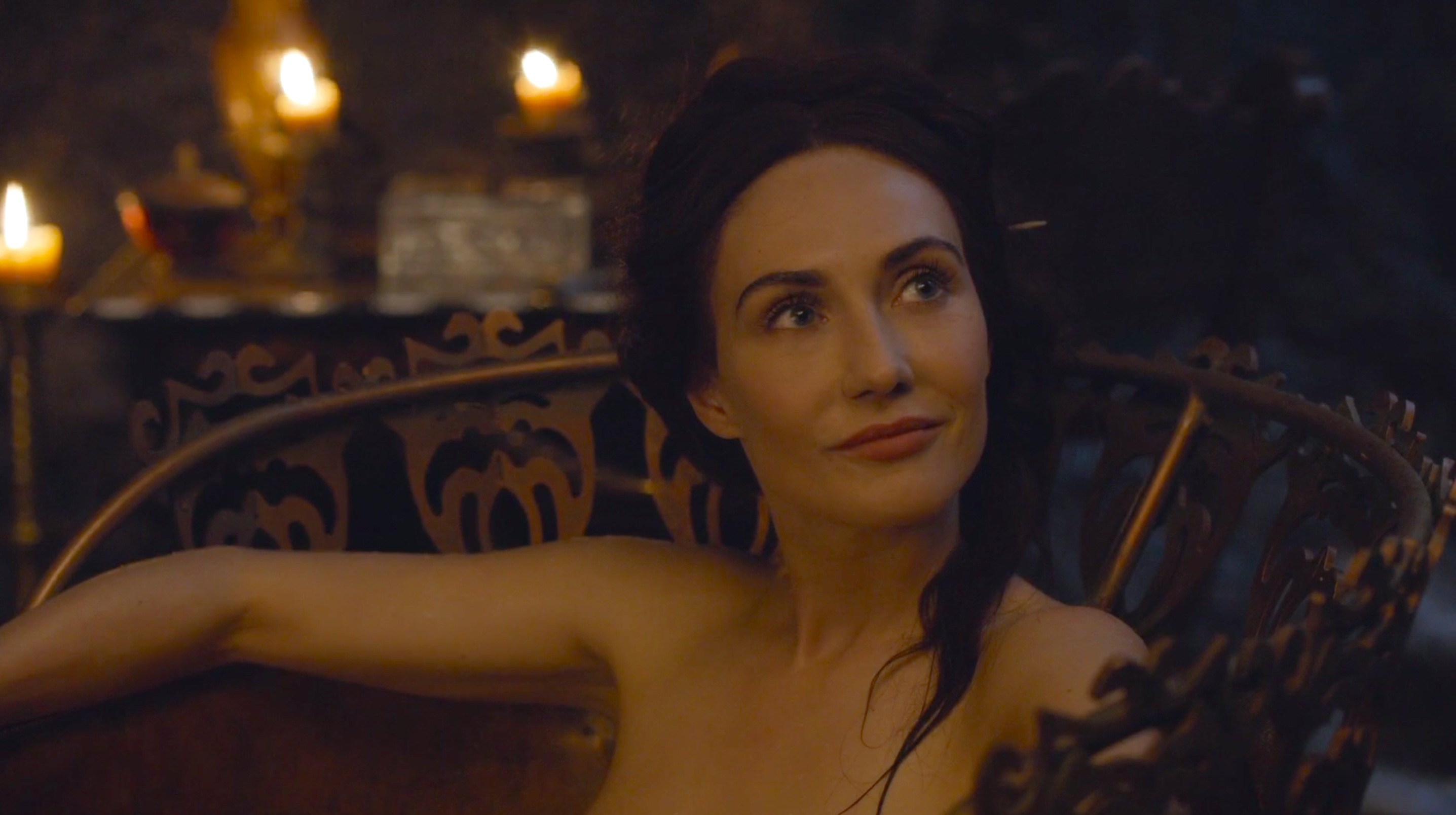
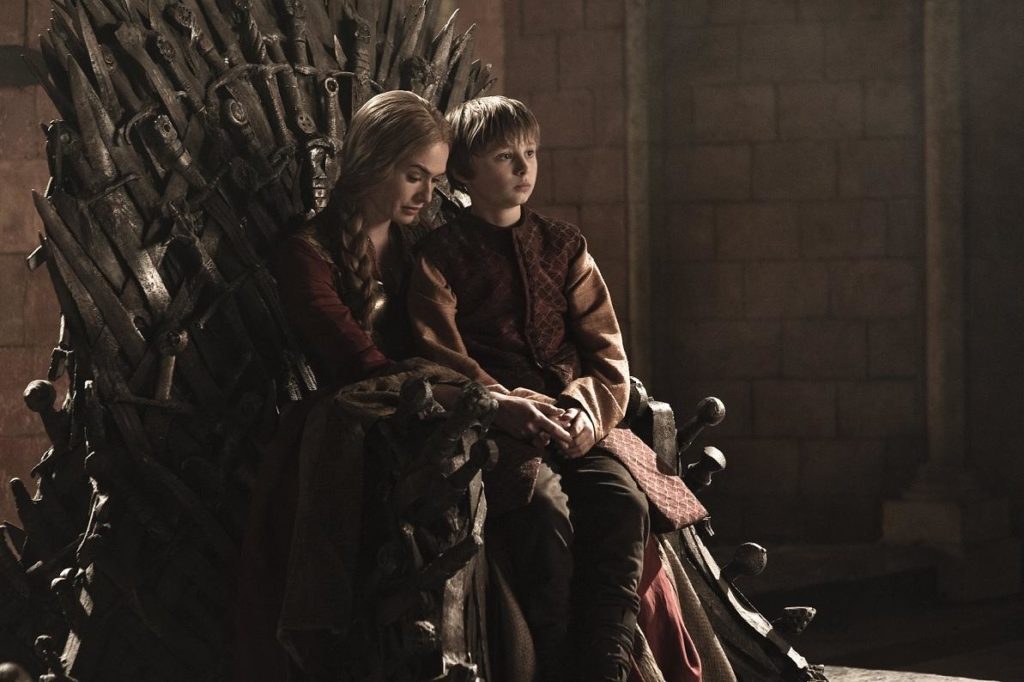
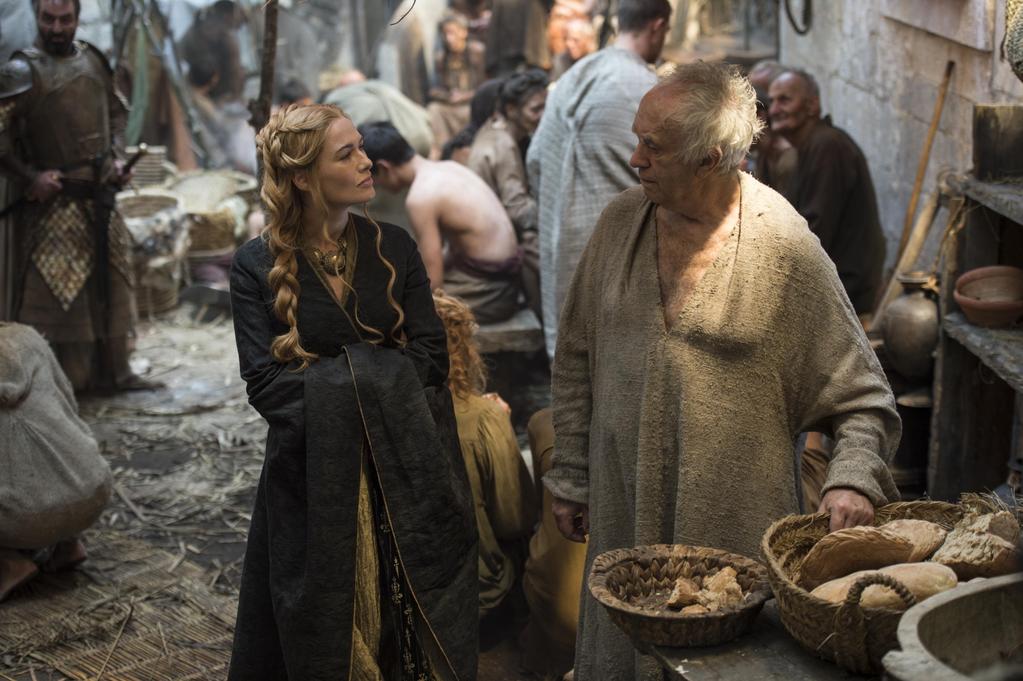

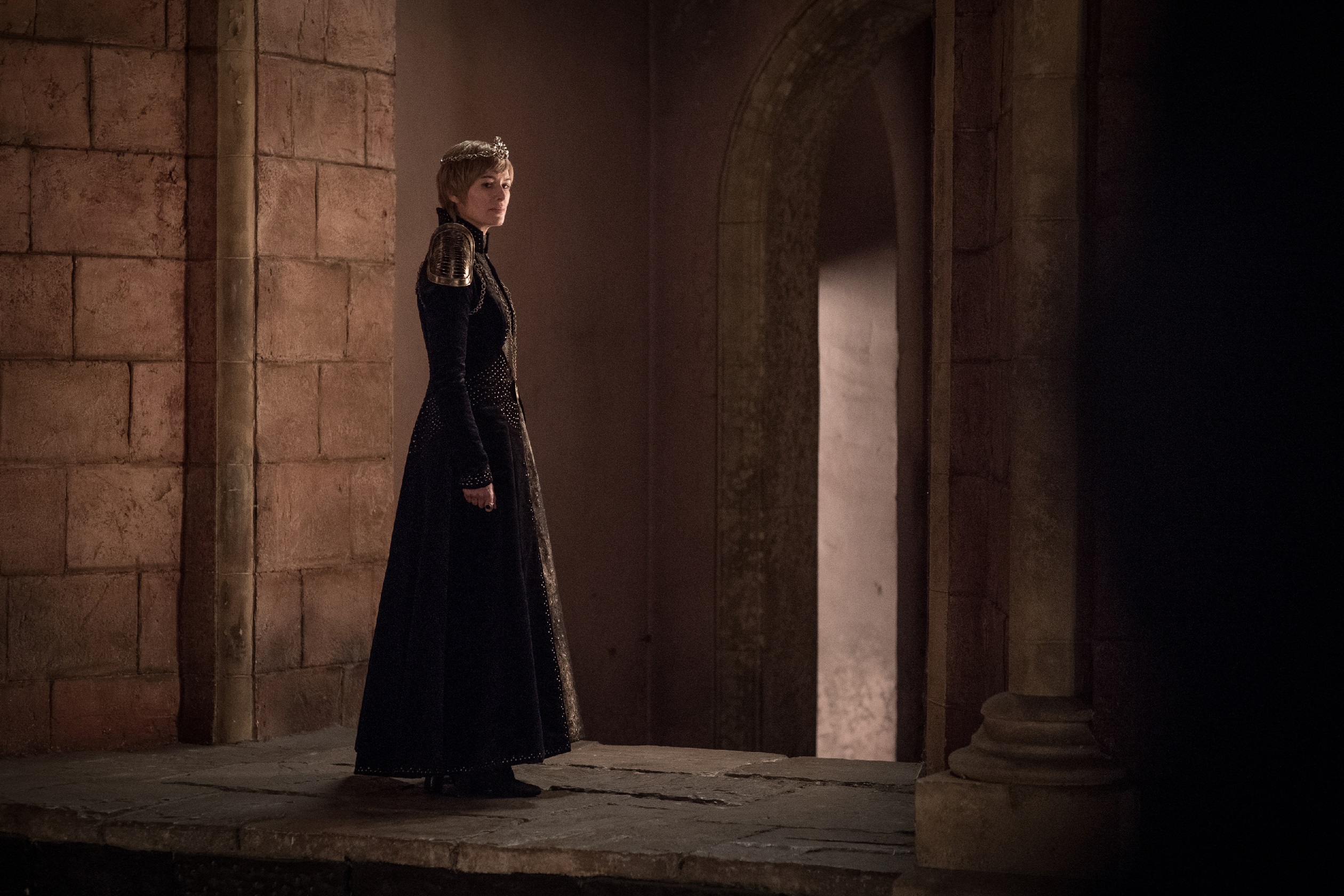
Thanks. 62 days!
We’re getting closer and closer.
This is a very long article. It could have been summed up in 1 sentence…
Cersei Lannister is a b#tch, the biggest b#tch in all of Westeros.
Good read! Was waiting for the Circe of the Odyssey reference
I love the title of this piece, very clever.
As for Daenerys being a “witch,” she also hatched a clutch of dragon’s eggs on her husband’s funeral pyre, which is witchy af. Then she emerged unburned twice over from conflagrations – which has always evoked, to me, witch burnings from the real world, and the fact that for all her powers, Daenerys (and GRRM, perhaps) is refusing that label.
Anyway, fun article, thank you!
Thanks for the TL;DR version.
I am glad I included one!
Thank you for reading, for your comments, and your kind words!
Thank You, Patrick – good read as always and lots to think about :o)
Patrick Sponaugle,
Oh yeah, should have been more clear… I was waiting for that reference, and happy when I got to it. First thing I thought of when I started the article (which yes, I read, all of it)
That Hot Pie conversation may have been the best conclusion I’ve ever read. Kudos!
Nice article. And also the first time I read about the “Circe” reference (I dare say I had already wondered if that was accidental, just as Jaime is very close to “J’aime” so I am not sure how accidental that is either)
Only slightly off-topic, though this has already been suggested by many others, but I want to take the opportunity 😉 Wouldn’t it be even more ironical if Tywin’s preferred children weren’t even his, with the Mad Queen resembling her father’s paranoia and Jaime resembling his half-brother (“Lannisters don’t act like fools”) so Tywin’s only real family legacy has to be passed on through Tyrion, and his “spiritual legacy” might even die out — in contrary to Eddard Stark’s spiritual legacy (perhaps except for the Jon Arryn contribution to it), as his name keeps being mentioned in mostly positive terms.
Thank you so much! I am glad you enjoyed it. It’s always nice to see you in the comment thread.
Thumbs up! If it makes you feel better, I intuited your clarification from your original comment. I’m glad you had that expectation, and glad that I delivered. Thanks again (for reading it all, which of course is a commitment since I’m wordy.)
I really appreciate that. Starting these features are hard, but ending them is harder. Having an example of a fairy tale featuring Cersei as the witch is better than just mentioning that maybe that’s what smallfolk parents would do. And it gave me a chance to crack a dad joke about gravy.
Thanks again for the comment.
I know people gravitate towards Tyrion being a Targaryen, but I’ve always been happier with Jaime and Cersei being Aerys’s children. It’s okay if it is not true, it works in my head canon.
I love you pointing out that Jaime might have been a reference to J’aime. Also, it establishes how Jaime should be spelled, since people often go with Jamie.
(I shouldn’t complain. For years I spelled Petyr Baelish as Peytr Baelish. I can’t explain why.)
Lady Rohanne Webber is Cersei’s great grandmother.
Thoroughly enjoyed reading this and now I’m off to read the linked essay.
Thank you, Kellie. Especially that you’ll check out the essay from ShakesofThrones.
Best wishes!
This is true! She married a Lannister after Ser Eustace. Cersei has rumors of witchcraft in her blood.
Love the witty article title 🙂
I was shocked that they let me get away with that, honestly. Much love to the Watchers editorial staff for indulging me.
Thanks for another fun and insightful article!
I never understood all of the “Dark Sansa” fan chatter. I always assumed she was trying to be incognito, like a fugitive at large. Bad black dye jobs are de rigueur for those on the lam!
This was really great, Mr. S! Particularly weaving in historical detail from the Dunc&Egg and the Fire&Blood books. Haven’t yet read the Shakespeare article, but will. George RR always manages to pile lots and lots of layers of meaning into his works. And yet people will complain that he doesn’t write “fast enough”…
I’m hoping for the worst for “Evil Witch Queen Cersei”, but fear we won’t see it, based in part on my own cynicism and on Emilia Clarke’s statement that we might not like Daenerys when all is said and done. And, changing the subject, I see no reason why Jon Snow and Daenerys Targaryen couldn’t successfully rule jointly. Their coupling isn’t “incest” in the Westerosi sense, it just confirms that Jon’s a Targaryen. In my opinion. Should be Jon’s, too!
Right! I mean, there are many reasons for her dark exterior, that don’t require a dark interior.
zandru,
Thank you very much Zandru. I hope you enjoy the linked essay. And you are right that there’s so much historical precedent for marriages of closer relation than Jon and Dany among Targaryens. (Which isn’t necessarily an endorsement.)
You could add Arya to the list of witches – she can change her face and complete body just by putting on a face and she is extremely skilled with poisons!
Thanks Patrick,
That was a great read. Check out this sculpture of Circe, I have often thought of GoT, when standing under her out reached hands. It’s over 2 m tall. It’s in the National Gallery of Victoria, Melbourne, Australia. And for those who noticed the name, which can puzzle people, while the ‘nation’ of ‘Victoria’ doesn’t exist anymore more, (after joining the Commonwealth of Australia), the gallery predates Australian Federation by about 50 years so it refused to change its name.
Anyway here she is…
https://www.ngv.vic.gov.au/explore/collection/work/3500/
This is a good suggestion. Jaqen H’ghar and his murder wishes is a very witchy archetype too.
Northstar,
Thank you! I appreciate the link and the background info
The statue is even evocative of our Cersei because of her short hair!
Patrick Sponaugle,
oh yes! “our Cersei” – I love it, sounds like a wayward cousin.
Hahaha! Our witchy wayward cousin Cersei
Patrick Sponaugle,
Hahaha!
Northstar,
😀
Another interesting and well thought out article Patrick – hard to disagree with anything you have written. I am probably one of only a small percentage who doesn’t see Cersei (or Tywin) as evil/mad. Flawed, vindicate, power hungry absolutely but this is a misguided lady who cared deeply about her family and her perceived birth right. It doesn’t excuse in anyway the bad things she has done but I don’t see a person who takes pleasure in cruelty of innocents for example like Joffery or Ramsay would.
Based on teevie Cersei, I’d have to agree with you there! But book Cersei is clearly cuckoo-bananas, with her Tyrion obsession plus manufacturing her own realities and then living in them. I’m all but dying to see what happens in the next book, with Kevan and Pycelle gone, leaving Cersei on the throne with fewer and fewer restraints, much less mature or informed judgement!
I further agree with you that Tywin was never “mad”, particularly book Tywin. He was cruel, selfish, and obsessed with his own success, which he equated falsely with promoting House Lannister. At worst, he’d be considered a “sociopath” these days – which translates to “really great businessman.” (sigh)
Well, I appreciate you saying that she might not take pleasure out of her cruelty, but people can do evil things dispassionately. Like Roose Bolton.
That’s fair, although it’s been three or four years since I read the books now I do recall Cersei was more twisted and mad in that medium.
In the books, I think it is clear that Cersei ordered the deaths of Robert’s bastards. And there’s stuff like young Cersei murdering childhood friends, and ordering servants blinded.
But this isn’t me trying to change your opinion of show Cersei. Because we don’t get her internal monologue like we do in A Feast for Crows, there’s no harm in having a mental model which has her more morally gray.
Thanks for this article. I have never heard of Circe before so it was doubly interesting. I also managed to scan the essay you linked.
I concur with the comment that a discussion of witches in GOT is incomplete without Arya. Actually a poorly behaved child would have less to fear from Cersei than from Arya. Arya hurts “bad” people it seems. A well behaved child could worry about Cersei. And Cersei cannot shape-shift, not so for Arya. Neither are mad in GOT.
I did a 10 second look at Circe on the net – nothing deeper. The first thing I noticed was that her mother was also a witch named Perse. Perse seems to be associated with ruling and crossroads. Cersei seemed to be a combined name.
The second thing I noted was that Circe often turned people into beasts. GRRM has a long association with Beauty and the Beast stories. Gwen Christie has said that GRRM told her that Brienne and Jaime have a B&B story. Jaime is the beautiful beast and Brienne is the beastly beauty. In GOT, Jaime acts on his worse instincts when protecting, helping, Cersei. That is when he is mostly “beast”. The move away from Cersei towards his shared values with Brienne is part of his identity arc.
Anyway, I think GRRM’s name choices/concept runs through the storyline really well.
You point out Circe and boar connection in the article. GRRM also uses a boar to help Cersei get rid of Robert.
(Of course, Robert could have stopped drinking like a responsible adult should chose to do when doing something dangerous.)
I thought about spotlighting the boar, and how Robert kept referring to it as a devil. I’m glad you brought back the connection here in the comments.
Thank you for reading the article, and I’m glad it had you do some research on Circe from the Odyssey.
She’s my second favorite witch from Greek myths, my favorite being Medea (a student of Circe) who also has some Cersei-esque traits.